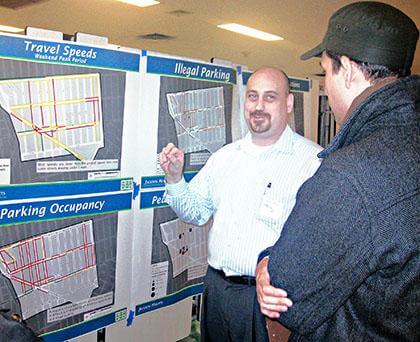By Howard Koplowitz
The city Department of Transportation released the results Saturday of a $1.4 million study it conducted of Jackson Heights that looked into congestion, land use and truck and bicycle use and surveyed drivers and pedestrians in the neighborhood.
Willa Ng, project manager for the Jackson Heights Neighborhood Transportation Study, said the agency is waiting on feedback from residents until it implements changes, which could include rerouting buses, pavement markings and changes to traffic signals and turns.
Ng said the study is different from other reviews the DOT does because the community had input in the Jackson Heights study.
“It’s very successful so far and a lot of that is because of this community. Not every community is heavily invested in what goes on,” she said.
She said the study revealed that Jackson Heights is “built around transit” and there is heavy congestion on 37th Avenue, 73rd Street, 74th Street, 82nd Street and Roosevelt Avenue.
“Because of the congestion, the buses are stuck in there and they move very slowly in the area,” Ng said. “It’s tough for pedestrians to move down the sidewalk a lot of times.”
Residents have complained of quality-of-life issues such as horn honking as a result of the congestion, Ng said. Other quality-of-life concerns include Roosevelt Avenue street signs covered in pigeon droppings because the elevated No. 7 line runs along the road. The birds roost on the subway stations.
The study’s findings may lead to changes in bus routes, Ng said. “If we can make changes to the network, to speed up the bus … the MTA will consider moving a bus route,” she said.
The DOT plans to place bicycle lanes on 80th and 81st streets.
Some streets, such as 74th Street, have many different land uses. The street has buses moving through it along with retail and street vendor activity, Ng said.
“The cyclists are competing with the trucks, with the cars, with the buses,” she said.
Similar streets include 73rd, 74th and 82nd streets and Roosevelt Avenue.
“They’re serving too many uses. As a result, they’re failing,” Ng said. “We need to come up with a more efficient way for these streets to work.”
The study also involved a driver survey, which entailed asking motorists stopped at red lights where they were coming from, where they were going and why they were in Jackson Heights.
Jackson Heights was the destination of 60 percent of the drivers, including 19 percent who were going from the neighborhood to another part of Jackson Heights.
The remaining 40 percent were driving in Jackson Heights to get to another destination.
Of the pedestrian traffic in the neighborhood, 45 percent were from Jackson Heights or the local area while 55 percent were from elsewhere.
Of the drivers surveyed, 48 percent said they were in the area to shop or go to a restaurant in the neighborhood, while 75 percent of pedestrians said those were the reasons they were in the community.
The study also measured driving speeds of cars and found that there are several streets in the neighborhood where drivers go slower than someone who walks down the block.
Parking is also an issue in Jackson Heights, the study found.
Whether it is metered or residential parking, “it’s over 90 percent occupied,” Ng said.
DOT officials are set to come up with ways to implement proposals drawn up from the study this summer.
Reach reporter Howard Koplowitz by e-mail at hkoplowitz@cnglocal.com or by phone at 718-260-4573.































